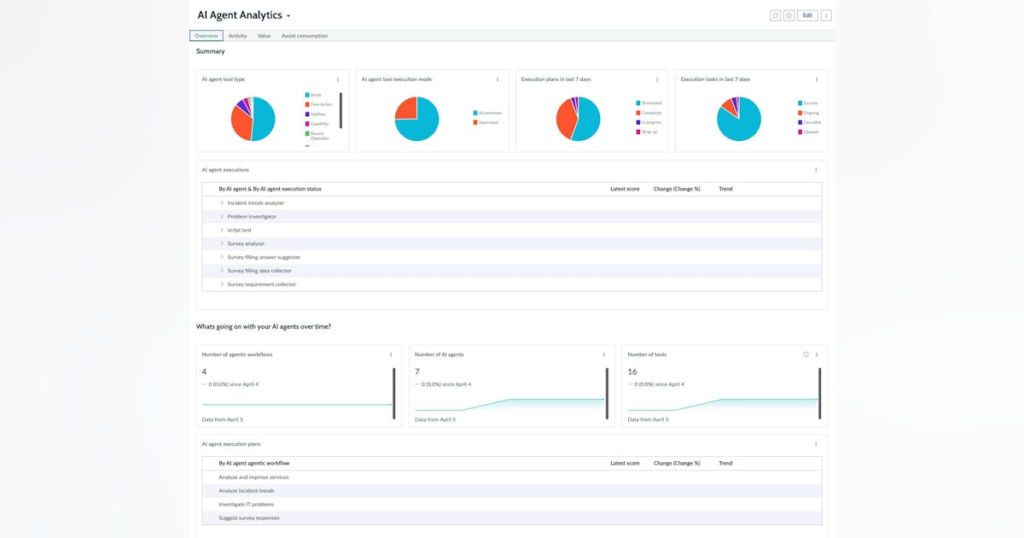In today’s digital landscape, small and mid-size businesses are increasingly turning to AI-powered automation to streamline operations and improve efficiency. This step-by-step tutorial will guide you through the process of designing, deploying, and monitoring such an automation system, even if you’re not a developer.
Before diving in, it’s vital to familiarize yourself with the prerequisites. You will need access to an AI platform, such as ServiceNow, that offers the necessary tools for automation. Additionally, ensure that your business has a clear understanding of the workflow you wish to automate and the data sources involved. Compile any existing documentation or workflows to clarify your objectives.
Next, initiate the configuration steps. Begin by logging into your chosen AI platform and navigating to the automation module. Here, you will usually find templates that can expedite your project. Select a suitable template for your specific needs. For example, if you’re automating support ticket processing, use a template designed for customer service operations.
Once you’ve selected your template, customize it to fit your existing workflows. Ensure that the necessary data sources are integrated into the AI system. For example, if you are pulling data from a customer relationship management (CRM) system, configure the API to allow seamless data transfer. During this stage, it’s essential to validate any data inputs to ensure they meet your quality standards.
Testing is a critical phase that should not be overlooked. Run a series of simulation tests to gauge the performance of your automation. For instance, if the automation is designed to resolve support tickets, create a few test tickets and monitor how the AI handles them. Assess whether the responses align with your expectations and make any necessary adjustments based on preliminary results.
After ensuring that testing meets your standards, it’s time to deploy the automation. Initiate the deployment within your platform, which generally involves a simple toggle or button press. Monitor the initial performance closely, allowing you to catch any unforeseen issues early on. Make sure to check the integration points between the AI and your other systems to maintain data integrity.
Monitoring your AI-powered automation is crucial for long-term performance. Most platforms, like ServiceNow, will offer dashboards where you can view key performance indicators (KPIs). Set up alerts for anomalies, as this can help you respond quickly to issues. For example, if the average time to resolve a support ticket increases unexpectedly, you can investigate and rectify the issue before it escalates.
Error handling is another essential component. Make sure your automation has protocols for handling exceptions. For instance, if the AI fails to provide an answer to a customer’s query, configure fallback mechanisms, like escalating to a human agent. This creates a seamless experience for your customers and upholds service standards.
Cost control is increasingly important as well. To manage costs, monitor the usage of resources allocated to your automation. Many platforms provide insights into operational expenses, allowing you to fine-tune your resources based on performance metrics. It’s wise to revisit your service agreement with your vendor; this can help you understand any hidden costs that may arise as your usage grows.
Security is a primary concern in any digital transformation. Ensure that you have implemented necessary security protocols, such as encryption and access controls, to safeguard sensitive data. Be aware that any automation deployment must comply with data protection regulations relevant to your business, like GDPR or CCPA. Taking proactive measures to secure your system and maintain customer privacy should be a top priority.
Data retention and privacy policies should also be established. Define how long data will be stored and the methods used for data deletion once it is no longer required. This is especially important because your AI system may gather vast amounts of information over time. Transparency with your customers about how their data is handled enhances trust and compliance.
Vendor lock-in is an issue that can affect many businesses embracing AI. When selecting your AI platform, consider future scalability and the potential difficulties of migrating to another service. Opt for platforms that support open standards and provide clear exit strategies to reduce dependency on a single vendor.
Lastly, evaluating the return on investment (ROI) is essential to understand the effectiveness of your automation initiative. You can estimate ROI by quantifying cost savings, increased efficiency, and time savings. Keep track of metrics before and after implementing the automation to measure its impact accurately. Regular reviews of these metrics will help you adapt your strategies and maintain alignment with your business goals.
Ongoing maintenance is key to sustaining the performance of your AI-driven automation. Schedule regular system checks and updates to ensure compatibility with your evolving business needs. Engage your team in performance reviews and gather feedback to enhance the system continuously.
FlowMind AI Insight: By following these structured steps, you can effectively design, deploy, and monitor AI-powered automation tailored to your business needs. With careful attention to security, privacy, and cost management, your organization can leverage the full potential of AI to foster growth and innovation.
Original article: Read here
2025-09-18 13:38:00

